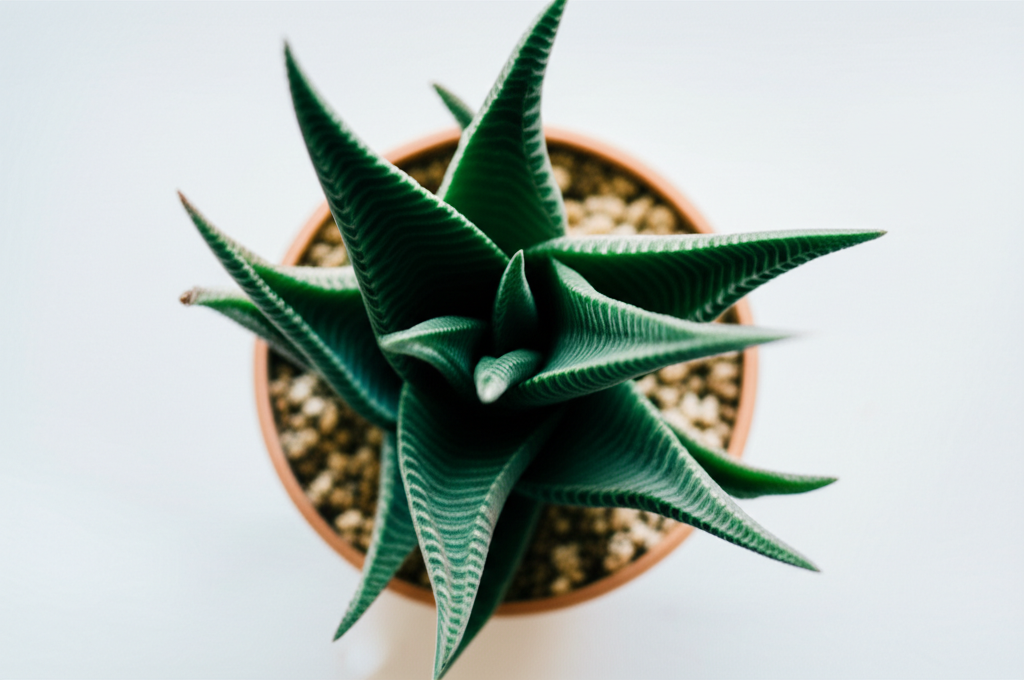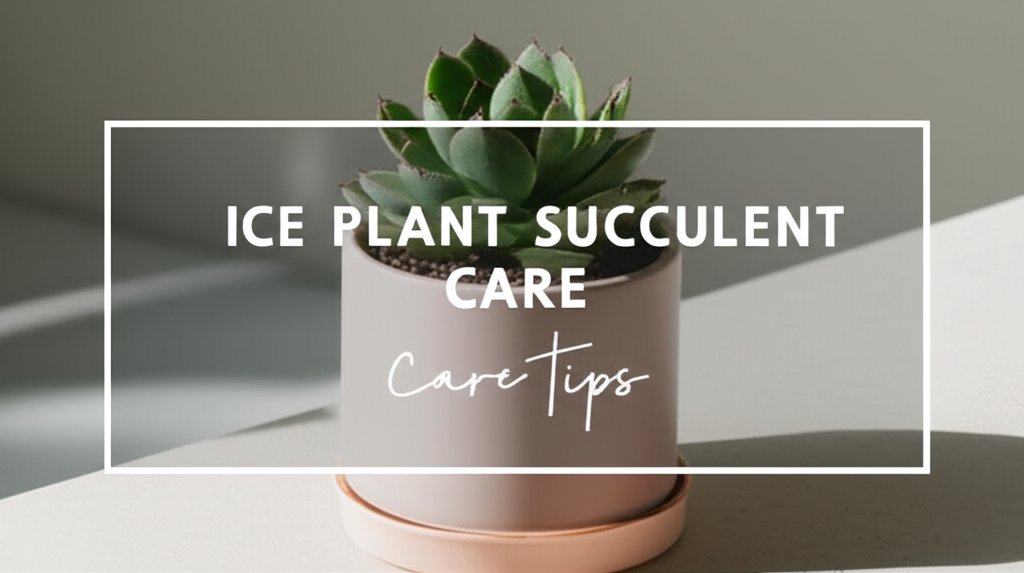Introducing the Mesmerizing Ice Plant Succulent
Ice plant succulents, scientifically known as members of the Aizoaceae family, are a captivating group of plants renowned for their unique, water-filled epidermal cells that create a glistening, frosted appearance. These “ice” cells, often called papillae, refract light, giving the succulent a jewel-like quality that can transform any indoor space into a miniature desert oasis. Beyond their striking aesthetics, many ice plant varieties are remarkably resilient and adaptable, making them a popular choice for both novice and experienced plant enthusiasts. Their diverse forms range from ground-covering creepers to more upright, shrub-like specimens, each offering its own charm. Understanding their specific needs throughout the year is key to ensuring these fascinating plants flourish indoors.
Understanding the Ice Plant’s Natural Habitat

To effectively care for ice plant succulents indoors, it’s crucial to mimic their native environments as closely as possible. These plants predominantly hail from arid and semi-arid regions of Southern Africa, particularly South Africa, Namibia, and Botswana. These areas are characterized by:
- Intense Sunlight: They typically grow in open, exposed areas, receiving copious amounts of direct sunlight for extended periods.
- Well-Draining Soils: Their native soils are often sandy, gravelly, or rocky, providing excellent drainage to prevent waterlogging.
- Infrequent but Intense Rainfall: While droughts are common, when rain does fall, it can be substantial. The plants are adapted to absorb this moisture quickly and store it in their succulent tissues.
- Moderate Temperatures: They generally prefer warm to hot temperatures during the growing season, with cooler, dry periods during their dormancy.
Replicating these conditions indoors will form the foundation of successful ice plant cultivation.
Seasonal Care Guide: A Year-Round Approach
The care requirements for ice plant succulents are not static; they shift with the changing seasons. By understanding and responding to these seasonal shifts, you can foster optimal growth and health for your plants.
Spring: The Awakening and Growth Period
As the days lengthen and temperatures begin to rise, ice plant succulents emerge from their winter dormancy, signaling the start of their active growing season.
Light Requirements:
- Increased Intensity: Spring is the time to gradually increase the amount of light your ice plant receives. Move it to a south-facing window or provide supplemental grow lights.
- Direct Sunlight: Aim for at least 6-8 hours of direct sunlight daily. If the light is too weak, the plant may become etiolated (stretched and leggy) and lose its compact form.
Watering:
- Increased Frequency: Begin watering more frequently as the plant resumes growth. Check the soil moisture by inserting your finger about an inch deep. Water thoroughly when the top inch of soil is dry.
- Drying Out Between Waterings: It’s still vital to allow the soil to dry out completely between waterings. Overwatering is a common pitfall that can lead to root rot.
Repotting and Fertilizing:
- Repotting: Spring is the ideal time to repot your ice plant if it has outgrown its container or if the soil has become compacted. Use a well-draining succulent or cactus potting mix.
- Fertilizing: Feed your ice plant with a diluted, balanced succulent fertilizer (e.g., 10-10-10 or 15-15-15 diluted to half strength) once a month during the spring growing season. Avoid fertilizing dormant plants.
Temperature and Airflow:
- Ideal Temperatures: Aim for temperatures between 65-80°F (18-27°C).
- Good Air Circulation: Ensure good airflow around the plant to prevent fungal diseases. A gentle fan can be beneficial, especially in humid environments.
Summer: Peak Growth and Heat Tolerance
Summer is typically the peak growth period for ice plant succulents. They thrive in the warmth and abundant light of this season, provided their essential needs are met.
Light Requirements:
- Abundant Direct Light: Continue to provide at least 6-8 hours of direct sunlight. In extremely hot climates, some afternoon shade might be beneficial to prevent scorching of sensitive varieties, but generally, they are heat-tolerant.
- Observation is Key: Monitor your plant for any signs of stress, such as wilting or browning leaves, which might indicate the need for slight adjustments in light exposure.
Watering:
- Regular but Mindful: Watering frequency will increase with higher temperatures. Continue to water thoroughly when the soil is dry, but err on the side of slightly less rather than too much.
- Avoid Misting: Misting the foliage is generally not recommended for succulents as it can encourage fungal growth and rot. Water the soil directly.
Temperature and Humidity:
- High Temperatures: Ice plants can tolerate high temperatures, often exceeding 90°F (32°C), as long as they have adequate light and their soil dries out properly.
- Low Humidity Preferred: They prefer low humidity environments. If your home is particularly humid in the summer, increasing ventilation is crucial.
Autumn: Transition and Preparation for Dormancy
As summer fades and autumn arrives, ice plant succulents begin to slow their growth in preparation for the cooler, less light-filled winter months.
Light Requirements:
- Gradual Reduction: As the days shorten, the intensity of natural light will decrease. Continue to provide as much bright light as possible, but understand that a slight reduction is natural.
- Monitor for Etiolation: If your plant is becoming leggy, it may indicate insufficient light, and you might need to supplement with grow lights.
Watering:
- Reduced Frequency: Begin to reduce watering frequency. Allow the soil to dry out more thoroughly between waterings.
- Monitor Soil Moisture: Focus on the soil’s dryness. With cooler temperatures and less light, the soil will take longer to dry out.
Fertilizing:
- Discontinue Fertilizing: Stop fertilizing in the autumn to allow the plant to naturally enter its dormancy.
Winter: Rest and Dormancy
Winter is a period of rest for most ice plant succulents. Their growth significantly slows, and their water needs are minimal.
Light Requirements:
- Brightest Location Available: Even though growth is reduced, the plant still needs bright light to maintain its health. Place it in the sunniest window available, ideally south-facing.
- Supplement with Grow Lights: If natural light is insufficient, consider using grow lights for 10-12 hours a day to mimic brighter conditions.
Watering:
- Minimal Watering: This is the most critical aspect of winter care. Water very sparingly. The soil should be allowed to dry out completely between waterings, and even then, only water lightly. Some growers may only water once a month or even less, depending on their environment.
- Avoid Wet Feet: The risk of root rot is highest during winter due to slower drying times and reduced plant activity.
Temperature:
- Cooler Temperatures: Ice plants generally prefer cooler temperatures during winter, ideally between 45-60°F (7-15°C). Avoid placing them near heat vents or drafty windows.
- Frost Protection: Ensure they are protected from frost, as most varieties are not cold-hardy.
Repotting and Fertilizing:
- No Repotting: Avoid repotting during winter unless absolutely necessary, as it can stress the plant.
- No Fertilizing: Do not fertilize during the winter dormancy period.
Common Pests and Diseases
While generally hardy, ice plant succulents can occasionally be susceptible to common houseplant pests and diseases, often exacerbated by improper care.
Pests:
- Mealybugs: These white, cottony insects often congregate in leaf axils and on new growth. They feed on plant sap.
- Spider Mites: Tiny, red or brown mites that create fine webbing on the plant. They also feed on sap and can cause stippling on leaves.
- Aphids: Small, green, brown, or black insects that cluster on new growth.
Diseases:
- Root Rot: The most common and devastating disease, caused by overwatering and poor drainage. Symptoms include yellowing, mushy leaves, and a blackening of the stem base.
- Fungal Spots: Can occur in humid conditions with poor air circulation, appearing as discolored spots on the leaves.
Prevention and Treatment Strategies
A proactive approach to pest and disease management is key.
Prevention:
- Proper Watering: The most crucial preventative measure is to avoid overwatering and ensure excellent drainage.
- Good Air Circulation: Provide adequate airflow to reduce humidity around the plant.
- Isolation: Isolate new plants for a few weeks to check for pests before introducing them to your collection.
- Cleanliness: Keep your plant and its surroundings clean.
Treatment:
- Manual Removal: For minor infestations, mealybugs and aphids can often be removed manually with a cotton swab dipped in rubbing alcohol.
- Insecticidal Soap or Neem Oil: For more widespread infestations, use an insecticidal soap or neem oil, following product instructions carefully.
- Fungicides: For fungal diseases, a fungicide may be necessary, but addressing the underlying cause (humidity, airflow) is paramount.
- Repotting: If root rot is suspected, carefully remove the plant from its pot, trim away any rotted roots with a sterile knife, and repot in fresh, dry, well-draining soil.
Key Facts and Comparison Table
Understanding the general needs of ice plant succulents can be simplified by a quick reference table.
| Factor | Ideal Indoor Condition | Signs of Distress |
|---|---|---|
| Light: | 6-8+ hours of direct sunlight daily. | Leggy growth (etiolation), pale leaves (too little light); yellowing or browning leaf tips (too much, especially sudden exposure). |
| Watering: | Allow soil to dry out completely between waterings. Water thoroughly when dry. | Mushy, yellowing, or wilting leaves; base of stem softening (overwatering); shriveled, limp leaves (underwatering). |
| Soil: | Fast-draining succulent or cactus mix. | Waterlogged soil, slow drying time. |
| Temperature: | Spring/Summer: 65-80°F (18-27°C). Winter: 45-60°F (7-15°C). | Leaf drop, stunted growth (too cold or too hot); wilting despite moist soil (root issues). |
| Humidity: | Low. | Fungal growth, leaf spot (too high). |
Step-by-Step Seasonal Care Summary
Here is a concise breakdown of the seasonal actions you should take.
| Season | Key Actions |
|---|---|
| Spring: |
|
| Summer: |
|
| Autumn: |
|
| Winter: |
|
Conclusion: Rewarding Your Efforts
Caring for ice plant succulents indoors is a journey that rewards patience and observation. By understanding their natural inclinations and adapting your care routine to the rhythm of the seasons, you can ensure these captivating plants not only survive but truly thrive. Their unique beauty, with their characteristic glistening “frost,” will undoubtedly bring a touch of arid wonder into your home year-round. Remember to always prioritize excellent drainage, ample light, and mindful watering, and your ice plant succulents will be a source of visual delight for years to come.


